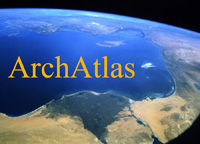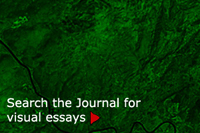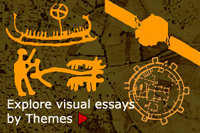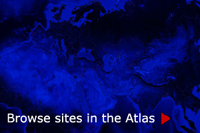 |
ArchAtlas is a web-orientated archaeological mapping and research project, founded by the late Prof. Andrew Sherratt. |
Where do I start?
 |
 |
 |
Frequently Asked Questions
* * *
What does ArchAtlas do?
1. ArchAtlas workshops
ArchAtlas has organised small productive workshops on important themes in archaeology in which spatial processes are important, to facilitate the exchange ideas across disciplinary boundaries, bringing together senior and new researchers and promoting new research partnerships.
2. ArchAtlas eJournal and Visual essays
ArchAtlas has hosted visual essays on our eJournal, which explore a wide range of archaeological problems and themes. The essays are based on workshop presentations, occasional commissioned or submitted research, and the foundational contributions of Andrew Sherratt.
3. Digital atlas and visualisation projects
In partnership with other projects and groups, ArchAtlas has hosted a scholarly digital archaeological atlas (including sites, environments, cultures and chronologies), and exploring different ways to visualise this information, such as with virtual globes like Google Earth.
* * *
What are the main themes covered by ArchAtlas?
ArchAtlas was founded on the idea that past cultural processes across time and space, are best explored and understood by visual means. Developments in digital mapping (GIS) and remote sensing have pushed forward the ability of archaeologists to visualise spatial-cultural processes together.
The themes that feature on ArchAtlas, are focussed primarily on prehistoric and early historical periods, and include, but are not limited to: the spread of farming, the formation of trade contacts, and the growth of urban systems. Remote sensing data and GIS techniques have been used to explain the locations of key archaeological sites and to integrate sites, cultural entities and contact routes with environmental data.
To make the visual essays in the eJournal easier to browse for new users, they have been grouped into 4 main themes, which you can browse from the 'Themes' menu list:
| Agriculture | |
| Routes, Trade and Exchange | |
| Settlement and Urbanism | |
| Visualisation and Technology |
* * *
Who is the website for?
This site is open and freely accessible to all users of the web, and includes both didactic content and current research. We encourage the use of the website, the visual essays and visualisation extensions in both teaching and research and simply ask for due attribution to www.archatlas.org and the relevant authors. Images may be freely used in public presentations with attribution. Please see our Copyright and citation guide for more details.
* * *
Who are the creators of ArchAtlas?
ArchAtlas was founded by the late Prof. Andrew Sherratt. The website and research projects are now directed and coded by Sue Sherratt, Deborah Harlan and Toby Wilkinson, whilst the eJournal contributions come from a range of scholars worldwide. Please see the ArchAtlas People page for more information and contact details.
The site was hosted by the Institute of Archaeology, University of Oxford (2004-2006) and then by the Department of Archaeology, University of Sheffield, UK (2006-2019).
* * *
How accurate is the information?
Every attempt is made by the project to ensure the factual content of the site. Occasional errors may creep in, especially with regards to co-ordinate data, where accurate co-ordinates have only recently been available. It should be remembered that many of the essays are research papers expressing opinions and interpretations that are the authors own. These do not necessarily reflect the views of the project or its team members. We also appreciate feedback and corrections to archatlas@shef.ac.uk.
The reference Atlas involves an ongoing and time-consuming programme of co-ordinate verification. In the meanwhile, we try to indicate an estimate of the reliability (a combination of precision and accuracy) of particular co-ordinates provided.
 Occasional Papers (2009-)
Occasional Papers (2009-) Site Visualisations
Site Visualisations